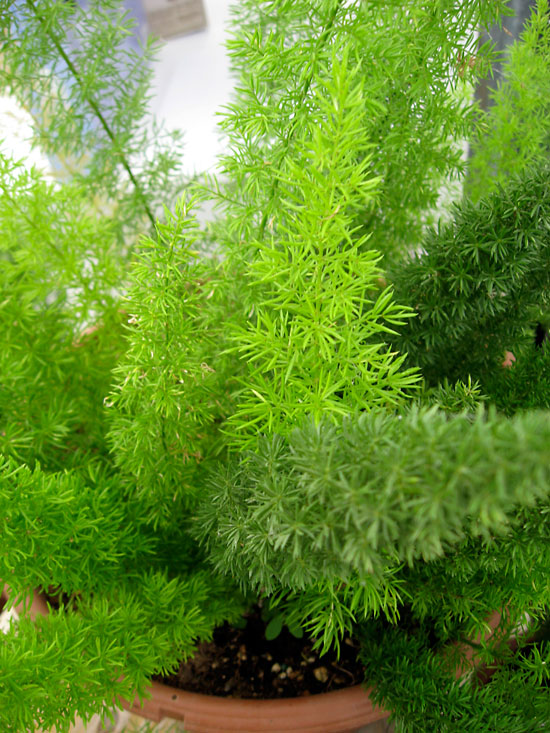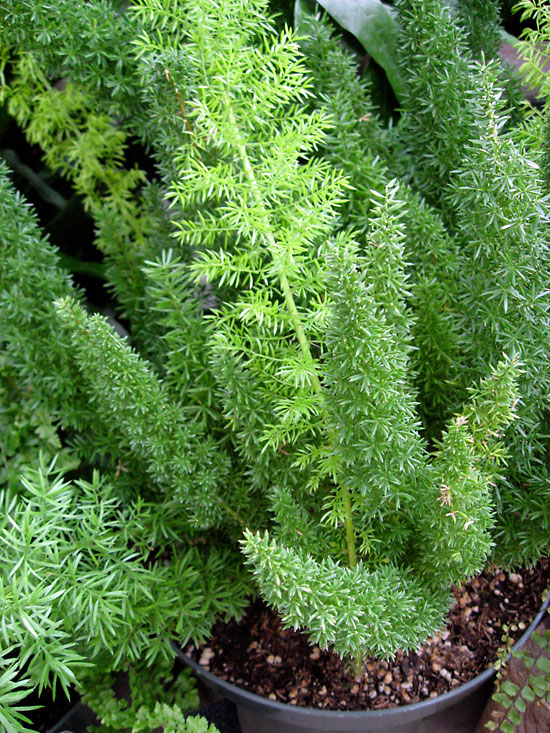Gone Gardenin’ — Ferns fabulous indoors and outdoors
Advertisement
Read this article for free:
or
Already have an account? Log in here »
We need your support!
Local journalism needs your support!
As we navigate through unprecedented times, our journalists are working harder than ever to bring you the latest local updates to keep you safe and informed.
Now, more than ever, we need your support.
Starting at $14.99 plus taxes every four weeks you can access your Brandon Sun online and full access to all content as it appears on our website.
Subscribe Nowor call circulation directly at (204) 727-0527.
Your pledge helps to ensure we provide the news that matters most to your community!
Read unlimited articles for free today:
or
Already have an account? Log in here »
Hey there, time traveller!
This article was published 27/03/2019 (1867 days ago), so information in it may no longer be current.
Most gardeners, including me, have a large number of house plants that serve both to beautify the interiors of their homes in the winter and to be moved outdoors during the growing season to enhance the outdoor landscape. I must admit that many such plants that occupy space in my sun room during the winter but are moved outside in the summer also are old favourites; plants that are not the newest discoveries but rather are quite ordinary and have been used in gardens for years.
One such plant is the asparagus fern, which has been around for years as a house plant and more recently has been making its way into outdoor landscapes. Asparagus ferns have been around for a long time and people have enjoyed them as house plants for years. Asparagus ferns are dependable, easy-to-grow plants that can put on an attractive display of foliage indoors or out.
Asparagus ferns are grown for their attractive, feathery foliage, which looks like it might be rather delicate, but it is not. The plant is quite tough and resilient — hence its suitability for being used outdoors.

Asparagus ferns have long, thick, wiry stems that begin by being upright but eventually become pendulous as they lengthen. These branches can be quite long, some growing well over a metre in length.
The bright green leaves are small — only a couple of centimetres long and only about a quarter of a centimetre wide; they are produced along the stems in bunches. The foliage has given rise to the common name for the plant because at first glace the foliage does resemble that of asparagus even though it is not a member of the asparagus plant family at all.
The asparagus fern does not belong to the fern plant family either; it is actually a member of the lily family, and is native to Asia and South Africa. Asparagus ferns grow outdoors year around in tropical areas — I have seen them used in outdoor plantings in both California and Hawaii — but they are not hardy in our area.
The most common form of asparagus fern is Asparagus sprengeri, which produces the longest fronds. The plants grow from fleshy rhizomes — not surprising as they are members of the lily family — and soon form gigantic balls of fibrous roots. This rampant root growth means that roots and rhizomes soon fill a pot; this is one plant that needs to be divided and repotted frequently.
This rapid rhizome and root growth contributes to fast growing foliage as well. If the branches get too long and cascade down too far to be accommodated in the allotted space, they can be trimmed. This will cause the stems to branch and the plant to become bushier.
Asparagus ferns are heavy feeders and need to be fertilized frequently to maintain bright green foliage colour. A plant lacking in nutrients will have pale green leaves.
Another variety of asparagus fern is Asparagus densiflorus, sometimes called the foxtail fern because of its unusually shaped fronds. While the ordinary asparagus fern has a blousy, pendulous, informal growth habit and its leaves are attached on opposite sides of the stems, the foxtail fern produces shorter stems of foliage that are round in shape because the leaves are attached to the stems all the way around, creating stems that do resemble a fox’s round tail.

Asparagus ferns like rich, well-drained soil; I have grown them successfully in a good quality soilless mix which is peat based. Some people add some compost to the planting mix. They like their planting medium to be kept moderately moist and resent having it dry out.
One common problem encountered when growing either of these ferns is the appearance of yellow leaves, which usually indicates that the soil is too dry. The yellow leaves will not recover and will in fact drop off the plant, so it is a good idea to prevent this from happening by not allowing the soil to become too dry.
Asparagus ferns make good house plants, but in the last few years they have been used increasingly outdoors in containers; in particular, Asparagus sprengeri is used in this way, often referred to in greenhouses as a basket stuffer. A grouping of foxtail ferns is more apt to be used as a ground cover while a single plant might serve as a specimen plant.
Used as a filler in a large container of other outdoor plants, the asparagus fern’s foliage acts as a foil for the other plants in the container that usually have larger leaves. It also can be used by itself in a hanging basket, but whatever way it is used, either the hanging basket or the garden urn sitting on the ground must be high enough to accommodate its long pendulous branches.
Outdoors, asparagus ferns should be protected from the strongest rays of the midday sun but will be happy receiving some direct morning or late day sun. Indoors, asparagus ferns will tolerate some direct sun, particularly in the winter months, but they will perform well in bright indirect light as well.
The asparagus fern, therefore, is a plant that can serve a dual purpose: it can be a house plant in the off-season, contributing attractive feathery foliage to the interior landscape. Then in the summertime it can contribute beauty to the outdoor garden.

If you see one of these plants at a garden centre, you might want to pick one up and add it to your indoor landscape with the view to using it in one of your outdoor containers when spring arrives. By springtime, it might even have grown large enough that you will be able to divide it (asparagus ferns are easy to propagate by division) and wind up with more than one attractive specimen for your garden.
Albert Parsons lives, writes, and gardens in Minnedosa.
» wtw@brandonsun.com
